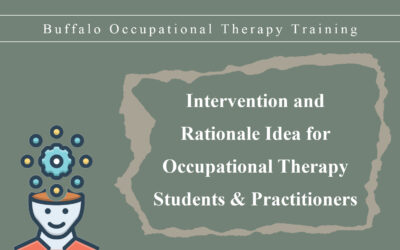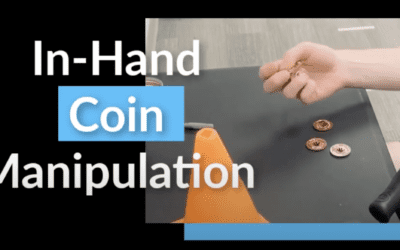
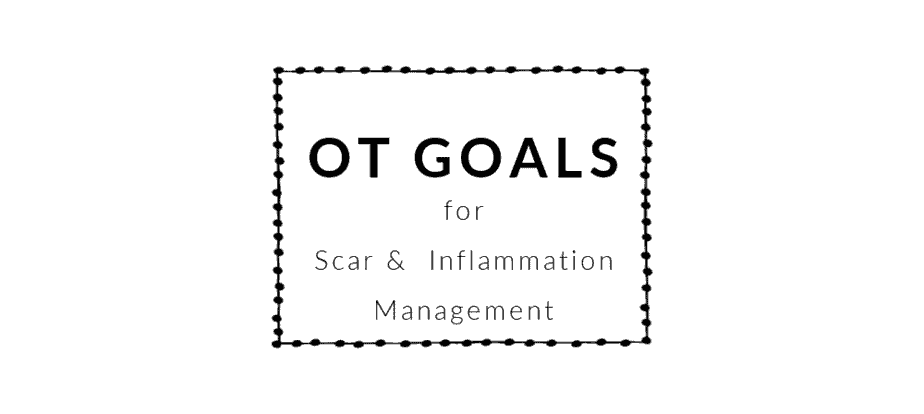
OT Goals for Scars and Inflammation Management
Scar and inflammation management are essential components of occupational therapy interventions aimed at optimizing healing, minimizing discomfort, and promoting functional recovery following injury, surgery, or trauma. Here’s how occupational therapists address scar and inflammation management:
Assessment and Monitoring: Occupational therapists conduct comprehensive assessments to evaluate the extent of scarring, inflammation, and tissue damage, as well as their impact on functional mobility and occupational performance. They assess scar characteristics such as size, location, texture, color, and sensitivity, as well as associated symptoms such as pain, swelling, and stiffness.
Scar Mobilization and Massage: Occupational therapists employ scar mobilization techniques and massage therapy to improve scar tissue pliability, elasticity, and alignment. They use gentle manual techniques such as effleurage, kneading, and friction massage to break down scar adhesions, reduce scar thickness, and promote collagen remodeling, facilitating improved range of motion and tissue flexibility.
Edema Management: Occupational therapists address inflammation and edema through various techniques aimed at reducing swelling, improving circulation, and enhancing lymphatic drainage. They may incorporate compression therapy, elevation, lymphatic massage, and contrast baths to alleviate edema, decrease tissue congestion, and promote fluid resorption, facilitating enhanced tissue healing and functional recovery.
Thermal Modalities: Occupational therapists utilize thermal modalities such as heat and cold therapy to manage inflammation, alleviate pain, and promote tissue healing. They may apply heat packs, warm whirlpool baths, or infrared therapy to increase blood flow, relax muscle tension, and promote tissue relaxation, while cold packs, ice massage, or cryotherapy may be used to reduce inflammation, numb pain, and decrease swelling.
Splinting and Orthotic Intervention: Occupational therapists design custom splints or orthotic devices to support and protect healing tissues, promote optimal alignment, and prevent contractures or deformities associated with scar formation. Splints may be used to immobilize joints, maintain functional positioning, or stretch tight tissues, allowing for improved scar management and functional recovery.
Pain Management Techniques: Occupational therapists incorporate pain management techniques such as transcutaneous electrical nerve stimulation (TENS), acupuncture, or biofeedback to alleviate pain associated with scar tissue and inflammation. They teach individuals relaxation techniques, breathing exercises, and mindfulness-based practices to manage pain, reduce stress, and enhance overall well-being during the healing process.
Patient Education and Self-Care: Occupational therapists provide education and training to individuals on scar management techniques, self-care strategies, and home exercises to facilitate active participation in their rehabilitation process. They educate individuals on proper wound care, scar massage techniques, skin protection, and gradual reintroduction of activities to optimize scar healing and functional recovery.
Collaboration with Healthcare Team: Occupational therapists collaborate with other members of the healthcare team, including physicians, surgeons, wound care specialists, and physical therapists, to ensure coordinated and comprehensive scar and inflammation management. They communicate treatment goals, progress, and recommendations, and participate in interdisciplinary care planning to address the multifaceted needs of individuals undergoing scar rehabilitation.
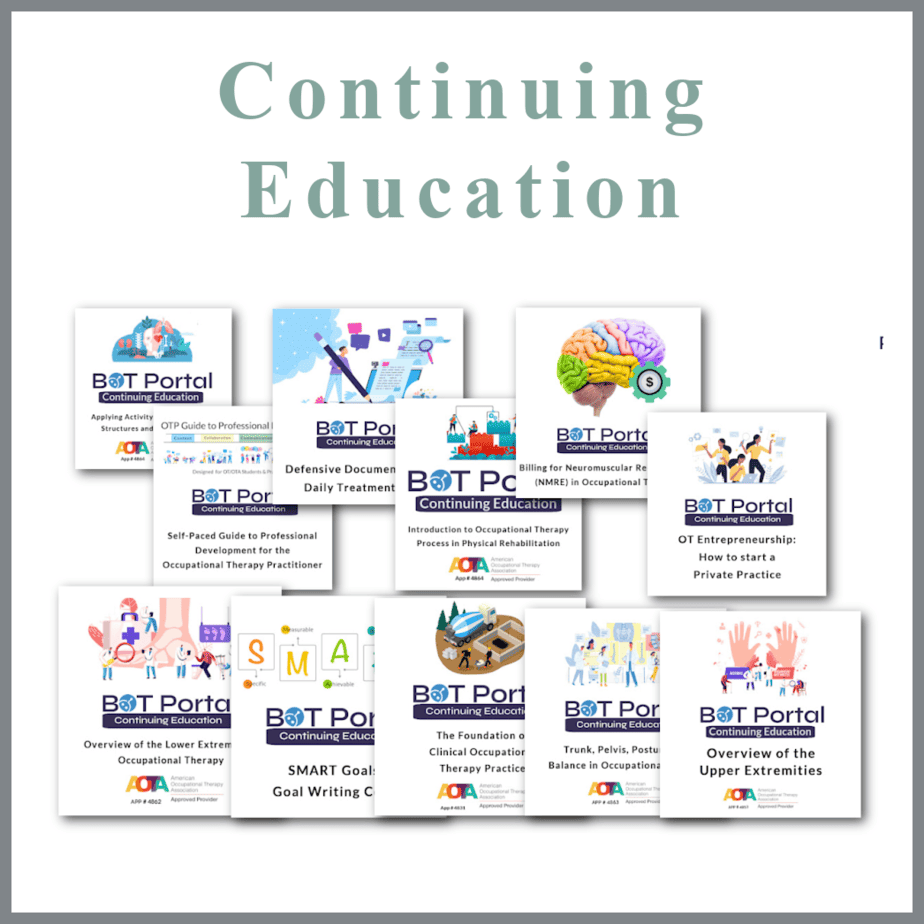

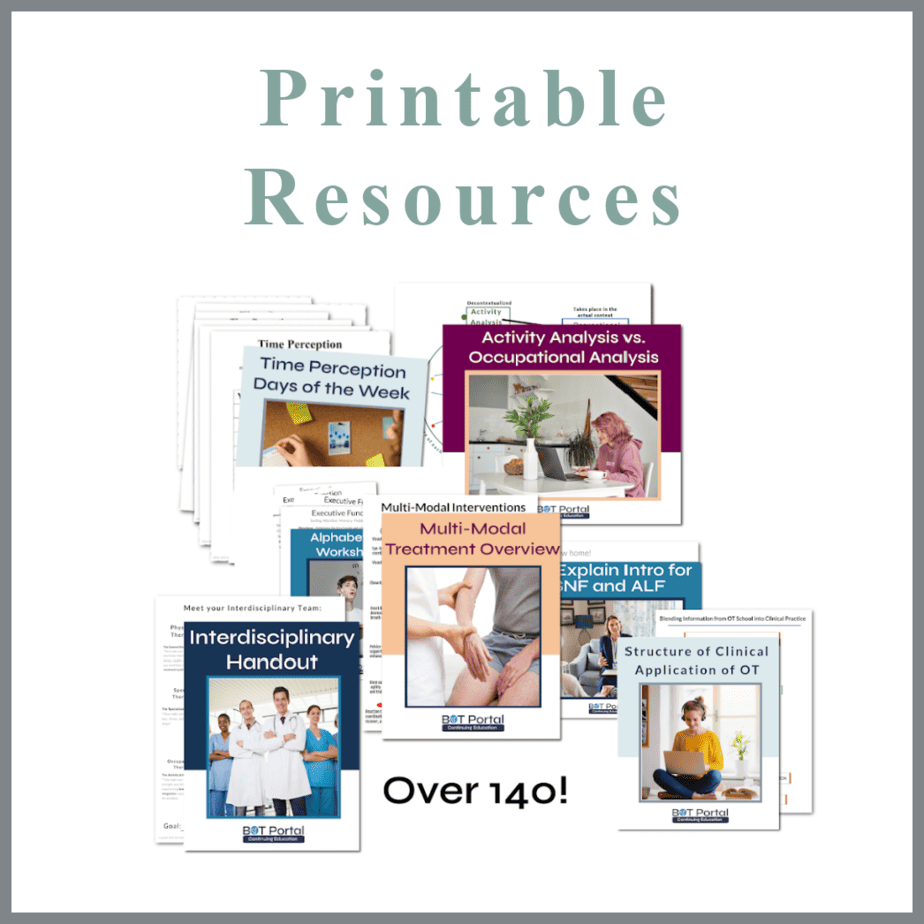
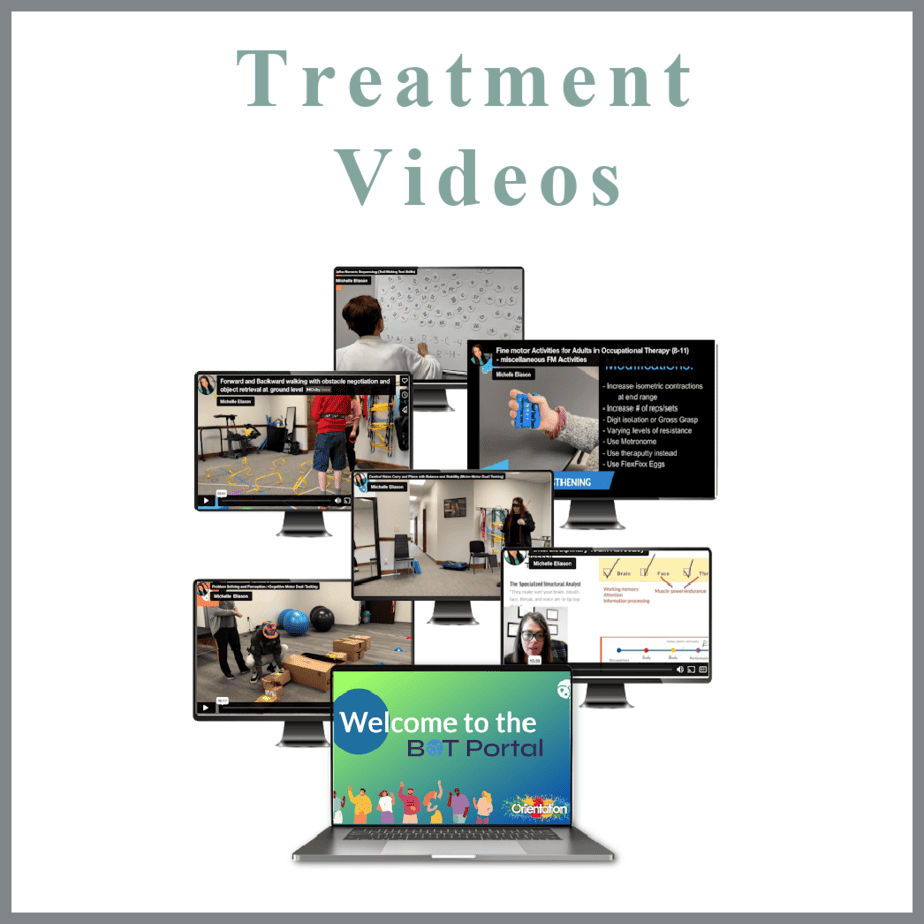
Membership Perks
Two Membership Options!
Your investment gives you resources to save you stress, self-doubt, and burnout as you become a confident and competent practitioner who can stand up for your professional point of view and scope of practice.
These are examples of what the BOT Portal Provides, and is not the complete list of goals. Do you love what you see?
Simple Goals for Scar and Inflammation Management
The patient [or caregiver] will communicate understanding mechanism and prevention of skin breakdown as evidenced by verbal discussion with practitioner and demonstration of learned skills within [xx] days/weeks.
The patient [or caregiver] will communicate understanding mechanism and prevention of pressure ulcers as evidenced by verbal discussion with practitioner and demonstration of learned skills within [xx] days/weeks.
The patient will demonstrate decreased inflammation/edema in [body site] as evidenced by [change in edema measurement like circumferential edema measurement, Volumeter, Pitting, etc] with [xx] weeks.
Goals Continuums and Progressions for Scar and Inflammation Management
Edema Management Goals
The patient will demonstrate an improvement in edema symptoms as evidenced by an overall decrease in Figure Eight Hand Measurement by 1 cm. in 6 weeks, to increase participation in daily functional tasks, such as home management.
Checkpoints:
- Complete, issue, and educate on successful completion of HEP for scar massage, edema management, and tendon gliding (25%)
- 4-6 sessions on scar massage and edema management (75%)

